|
Ah, the lure of the open road. Nothing says "let's go" more than strong curves with decreasing width, as far as roads go. So compelling!
1 Comment
If you are painting a sunny scene, it's "vraiment important" to remember to keep in mind where the sun is. At what angle are the sun rays coming into the scene and therefore what are the shadows going to look like. It has to make sense, all of it, each object with it's shadow to render the scene credible. Use a ruler to check the angles if needed. And add some light sun-kissed accent to your work and it will sing!
There a lot more interesting things to look at in life than 3 things that look exactly the same. But it's a start. It gives some rhythm to an image, as the eye jumps from one to the other. But what is even better is when these 3 things are slightly different. then you get interest AND rhythm. Cool!
Water has a tendency to reflect light objects slightly darker and dark objects slightly lighter. In other words, real life is on the extreme of the contrast (light/dark) spectrum whereas reflections on the water is on the inside of these outer extremes on the spectrum. Makes sense if you've had a glass of wine. So ask yourself, "Is that rock really bright in the sun?" if the answer is yes, make it a bit duller once painting its reflection in the water. "Is this tree shadow super dark, almost black?" If so, it's going to be lighter in the water. Get the idea?
When you paint a path/road, and you want to encourage the viewer to go down that path into your painting, one way to do that is to put something interesting at the end of the road/trail. So pick a distant focal point like "oh, what is this sweet little house in the distance?" Makes you want to enter into the painting to go see it right? Absolutely!
A good trick to "unify" a composition is to repeat a colour elsewhere in the painting. If you use red somewhere, you can add small touch of red in two other locations. I like to "triangulate my repeats, with the three areas of very similar colour forming a triangle in the painting. I don't know for sure if it helps liven up the piece but I find myself jumping from the blues to the blues and the oranges to the oranges, linking the dots and therefore creating in my mind a network. Sometimes, the colour will be duller in the distance but it still reads as the same colour.
What does that even mean "be a good liar" ? It means that in order to convincingly tell something that is not true, you have to add some really believable true elements to your statement. Like :" Guess who sat beside me on the Earls" patio on Main street, it was (insert famous person name)" . Because you included a bit of verifiable truth (the Earl's on Main), your false statement (in reality no famous person came to town;( ) appears more believable. So, it's the same for painting. You want to use wild crazy colours in your landscape or cityscape or portrait, it will be more believable if you maintain some truth, in this case, truth as perspective and proportions. Viewers know when roads are drawn all wrong, like not going smaller in the distance, or trees don't make sense with the main trunk smaller than the branches! so pay attention to those details and then enjoy going wild with the colours or other elements of design.
Using neutral colours (made by mixing a tertiary colour or mixing complementary colours together) like a yellow mixed with a little blue violet, can off set pure expressive colours a lot more than when the entire painting is made with bright saturated colours. It's like eating just super sweet foods and super salty foods without having some bland food in between to cleanse the palate. Bread would do the job but with a painting, neutrals do it just as well!
The colour green can often occupy too much space in a landscape painting. But to avoid "greenitis" you might want to vary your greens. Going with bluish green to very light cadmium greens. From a warm olive green to a cool phtalo blue green. It make all the difference to have variety and gradation with those green. And the warmest green come forward as the cool blue ones tend to recced. easy peazy!
When at all possible (and why would it not be?) try in incorporate a gradation in colour throughout a shape from top to bottom or right to left. Like within the shape of the sky, or a big hill or mountain, or the surface of a lake. Going from a darker tone to a lighter one, from one colour to another one. It always creates interesting effects and keep the viewer viewing!
|
Archives
November 2020
Categories |
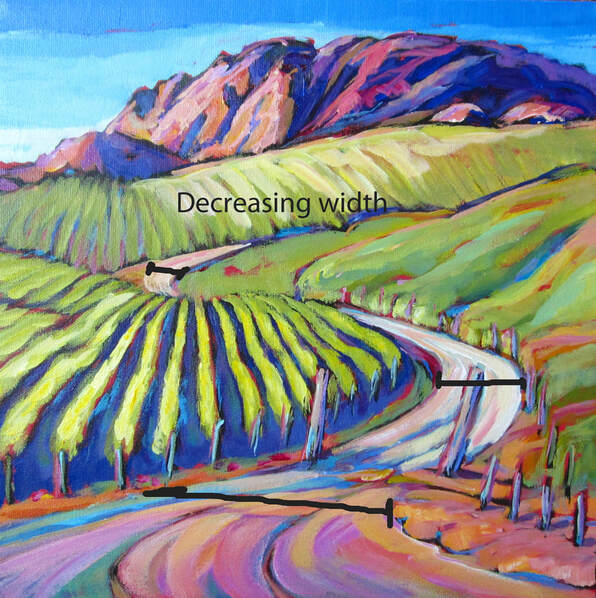
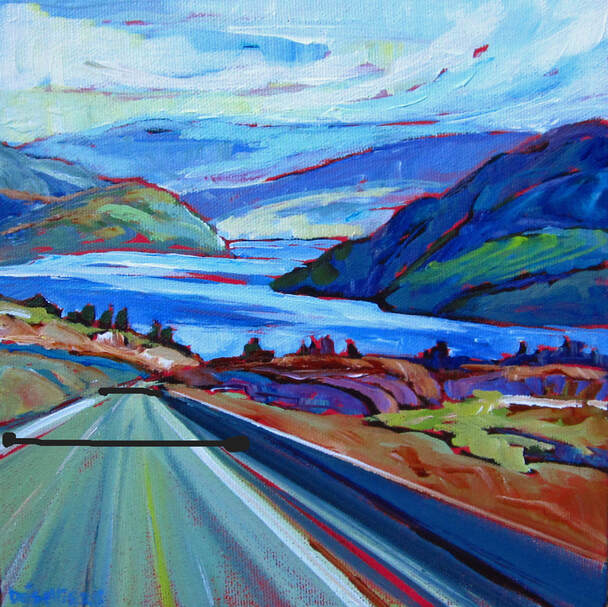
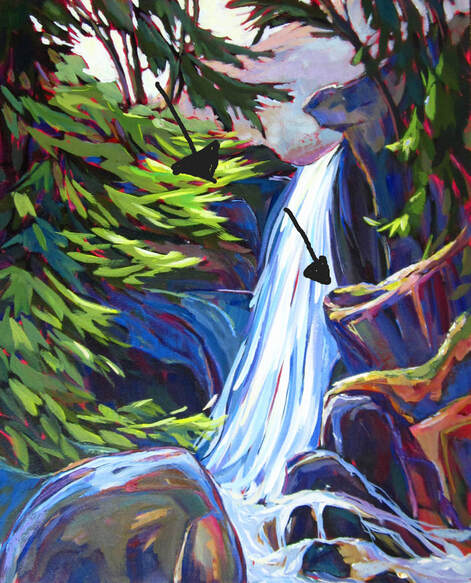
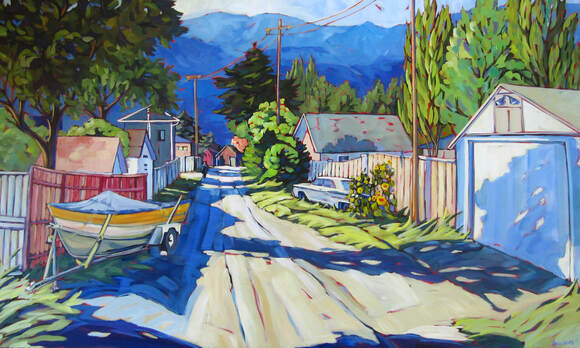
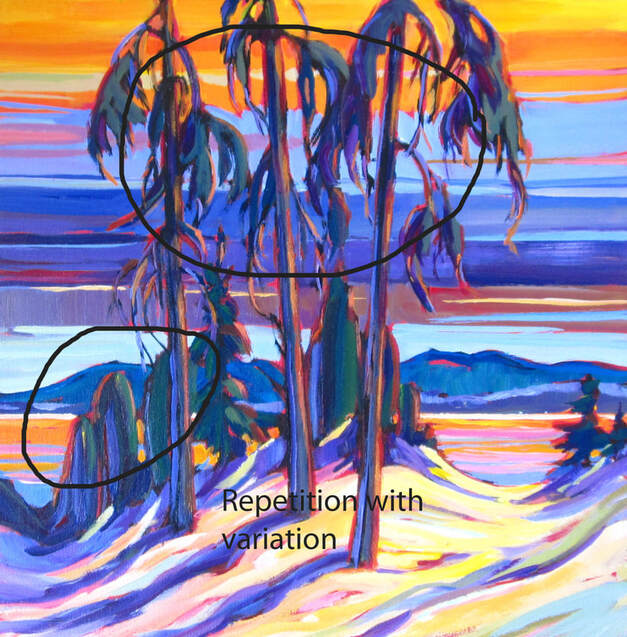
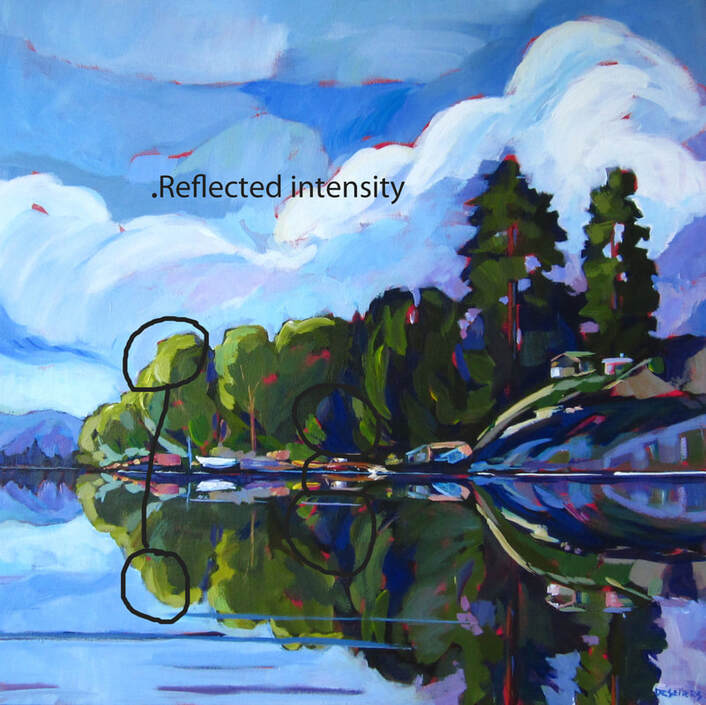
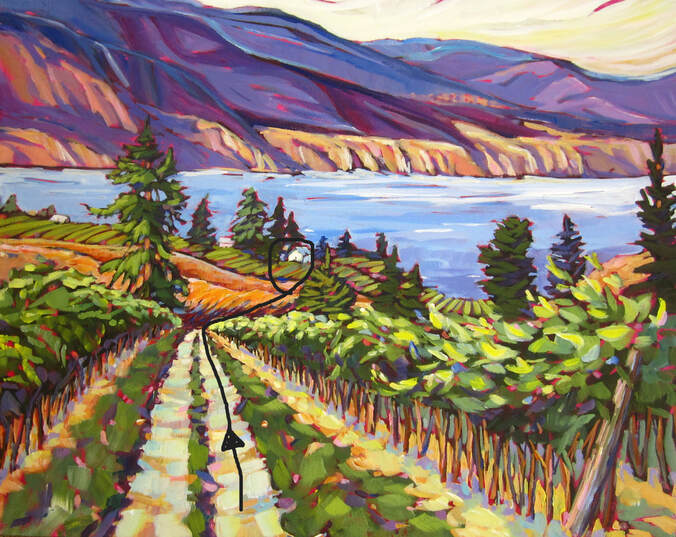
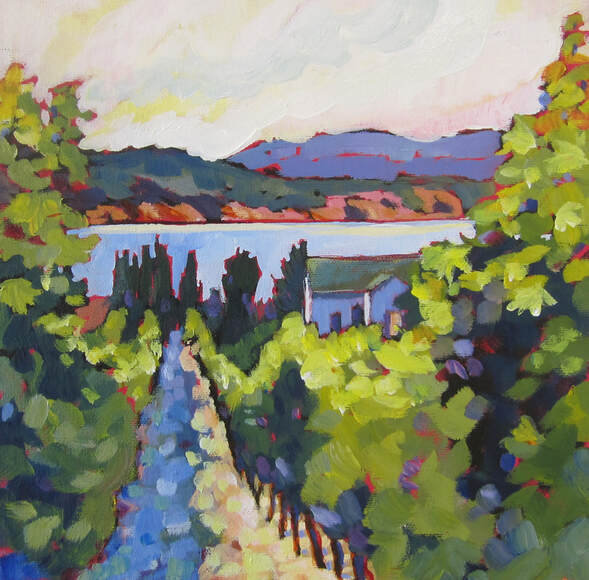
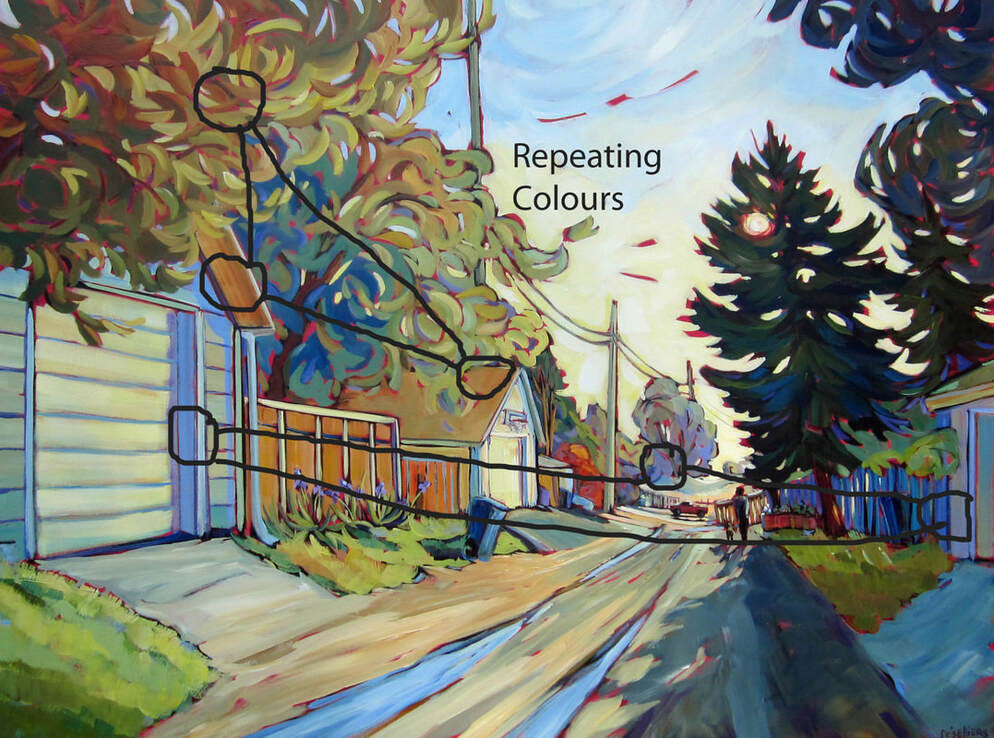
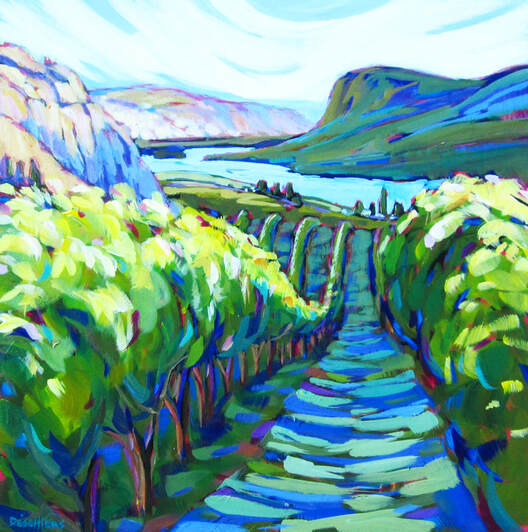
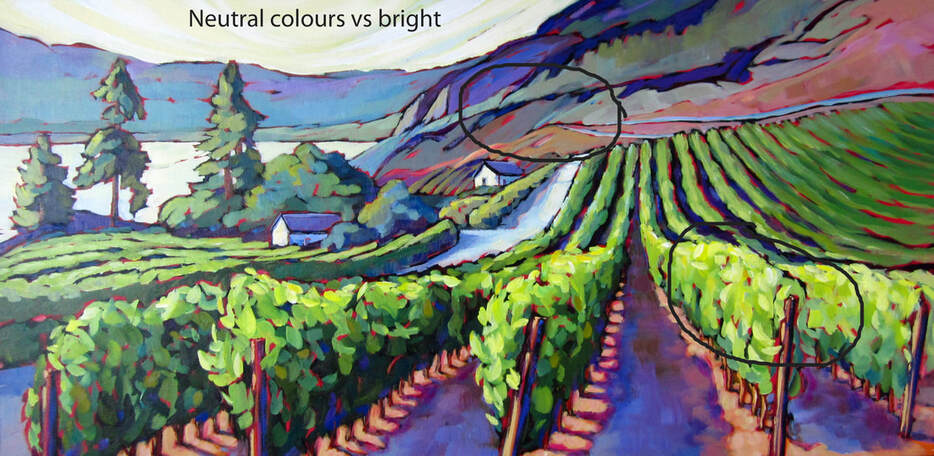
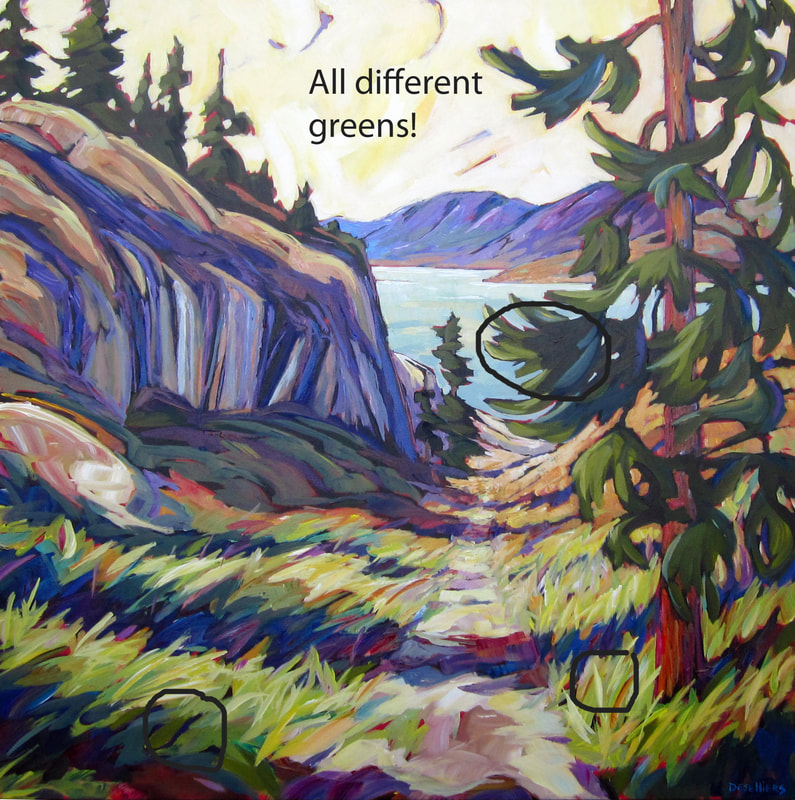
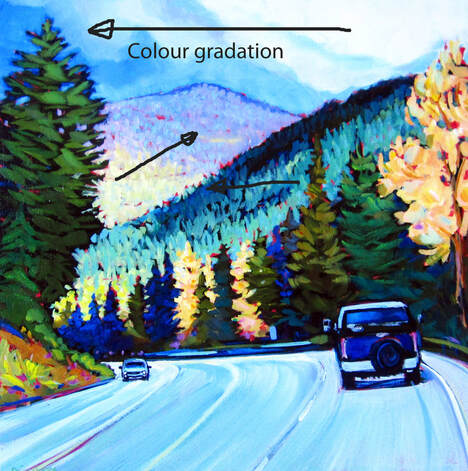
 RSS Feed
RSS Feed
